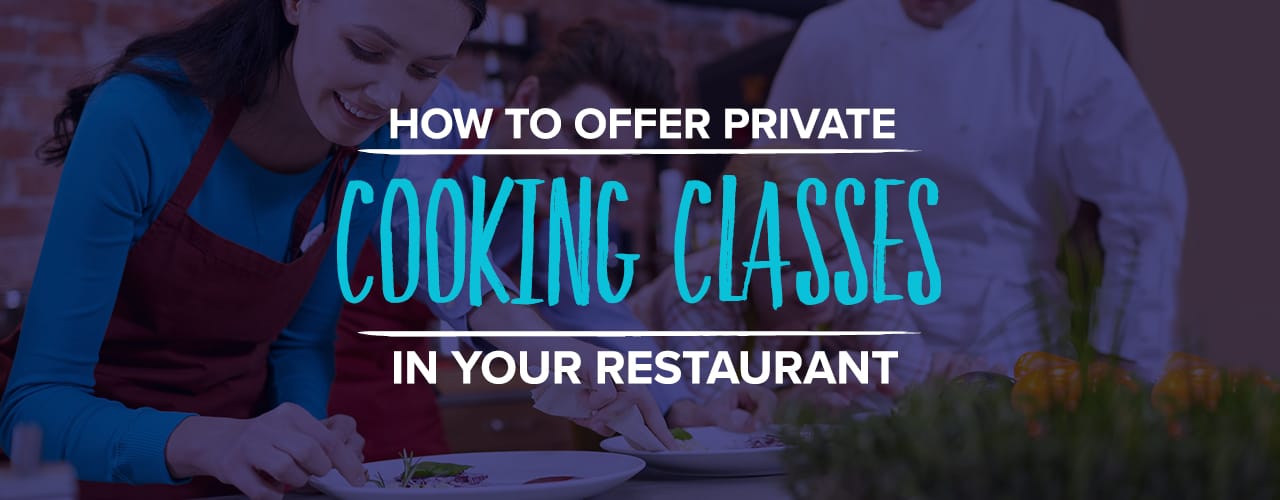There are three types of cooking methods: dry heat cooking, moist heat cooking, and combination cooking. Each method describes how chefs use heat to cook food and bring out unique flavors and textures. Understanding these different cooking methods can help you choose the best technique for your ingredients and create delicious meals. Additionally, knowing which cooking methods align with your menu allows you to choose the right kitchen equipment to achieve consistent, flavorful results in your cooking. Use this guide to learn more about the different types of cooking methods and the best food for each technique.
Click any of the cooking methods below to learn more:
Sous Vide
Poaching
Simmering
Steaming
Boiling
Baking
Grilling
Roasting
Sauteing
Frying
Broiling
Braising
Stewing
Glossary
1. Moist Heat Cooking
As the name indicates, moist heat cooking relies on the presence of liquid or steam to cook foods. Use this method to make healthy dishes without any added fat or oil. It's also a great way to tenderize the tough fibers in some beef cuts, like chuck or brisket. When cooking fibrous vegetables and legumes, moist heat softens the food until it reaches the perfect tenderness. Unlike dry heat methods, moist heat cooking will not produce a browned crust.
Sous Vide
Though this cooking method recently gained popularity for home chefs, commercial kitchens have used sous vide to cook delicious meals for decades. Sous vide, a French term meaning "under vacuum," involves placing vacuum-sealed food in a hot water bath to slow-cook it. This cooking method requires an immersion circulator, a hot water tank, and vacuum sealing equipment. In addition to reducing food waste and energy consumption, sous vide reduces prep time and contamination risk. The final product is moist, tender food perfectly marinated by the natural juices trapped in the bag.
Best Foods for Sous Vide
Meats: In addition to perfectly cooking meat to whatever doneness customers prefer, meat cooked with sous vide will not be scorched or have overcooked edges. Even tough cuts will turn out juicy and tender.
Poultry: Cook light and dark meat until it falls off the bone without worrying about undercooking or the chicken drying out.
Fish: While sous vide does not allow you to cook whole fish, fish filets can be tender, flaky, or well-done using sous vide. Even salmon, which is notoriously difficult to cook, maintains its size, color, and tenderness with sous vide cooking.
Eggs: Make scrambled, poached, or hard-boiled eggs easily without monitoring them while they cook. You can vary the texture and style by manipulating the water bath's temperature and cooking time.
Poaching
Poaching is a gentle cooking method that submerges food in hot liquid between 140 degrees and 180 degrees Fahrenheit. The low heat works well for delicate items, preserving moisture and flavor without needing fat or oil.
Best Foods for Poaching
Eggs: Poaching is a common method of cooking eggs that results in a soft, tender egg white and creamy yolk. It's more health-conscious than pan frying since you don't need oil.
Poultry: You can use broth, wine, or aromatics for poaching liquid, which adds flavor to boneless, skinless chicken breasts. The finished product is tender chicken that can be cubed, sliced, or shredded and added to salads, pasta, or sandwiches.
Fish: Poaching is a great way to preserve the delicate texture of light fish like tilapia, cod, and sole. A special broth called court bouillon adds flavor to the fish as it cooks.
Fruit: Use a sweetened liquid to poach fruits like pears or apples for a unique dessert. This method deepens the flavor of the fruit and softens the texture until the fruit is tender. Use any leftover liquid to make a flavored syrup to serve with the fruit.
Simmering
Simmering is a gentle method of cooking food that utilizes higher temperatures than poaching, usually between 180 degrees and 205 degrees Fahrenheit. This temperature range lies below the boiling point and produces tiny bubbles. To achieve a simmer, bring water to the boiling point and lower the temperature.
Best Foods for Simmering
Rice: Simmering produces cooked rice with a light, fluffy texture. Using boiling water causes the rice to become sticky and dry.
Meats: Choose tough cuts of meat that will release fat and collagen as they simmer, like chuck roast.
Soups and Stocks: Because simmering releases fat and proteins from meat, it produces a rich flavorful broth used in soups or stews.
Vegetables: Gentle simmering cooks tough root vegetables like potatoes and carrots to the perfect texture.
Grains: You can simmer grains like quinoa, oats, or millet until they reach a soft edible texture. Hot cereal is made by simmering grains until most of the water evaporates, creating a smooth porridge.
Legumes: Simmer dried beans and legumes for a soft, edible texture. Some beans, like lentils, cook quickly, while others take several hours of gentle simmering to become fully cooked.
Steaming
To steam food, boil water continuously to produce a steady steam cloud. The steam surrounds food and cooks it evenly while retaining moisture. For high-volume kitchens, the most efficient steaming method is a commercial steamer or combi oven. You can also use a pot and steamer basket, a microwave, or wrap food in foil and cook it in the oven.
Best Foods for Steaming
Vegetables: You can steam most vegetables with excellent results. Steam sturdy veggies like beets, carrots, and potatoes longer than delicate foods like leafy greens.
Fish and Shellfish: For more flavorful fish, broth or wine can be used instead of water. Fish stays tender, while shellfish like clams, mussels, lobster, or crabs are cooked inside their shells.
Desserts: Some desserts are steamed rather than baked, producing a moist, silky texture. Creme brulee, flan, and panna cotta are all custards made using this cooking method.
Tamales: Tamales are a popular food made by steaming masa, a dough made of ground corn, and fillings inside a corn husk packet. The steam makes the corn dough tender and moist.
Boiling
This cooking technique involves submerging food in water heated to the boiling point of 212 degrees Fahrenheit. The boiling water produces large bubbles, which keep foods in motion while they cook. The expression slow boil means that the water has just started to bubble slowly but is not quite heated to the boiling temperature. A full boil occurs at the boiling point, appearing as fast-moving, rolling bubbles. Steam is also released from the water as it boils.
Best Foods for Boiling
Pasta: Pasta is one of the most commonly boiled foods. The hot water cooks the pasta quickly, allowing chefs to remove it from the water before starches break down to prevent a mushy texture.
Eggs: Boiling eggs in their shell produces hard- or soft-boiled eggs. The texture of the yolk can range from firm to creamy, depending on the cook time.
Vegetables: Tough root vegetables like potatoes and carrots will cook more quickly in boiling water. Test their tenderness with a fork so they don't overcook.
Back to Top
2. Dry Heat Cooking
Dry heat cooking works without any moisture, broth, or water present. Instead, it relies on circulating hot air or contact with fat to transfer heat to foods. Temperatures of 300 degrees or more create browning, a reaction where amino acids and sugars in food turn brown and create a distinct aroma and flavor. The unique scents of toasted bread or seared meat are examples of dry heat cooking at work.
Baking
Baking and roasting use indirect heat to surround foods and cook from all sides. However, roasting refers to cooking meats or vegetables, and baking indicates making bread, rolls, and cakes. Additionally, baking usually uses lower temperatures than roasting.
Best Foods for Baking
Baked Goods: Baking transforms wet dough or batter into a final product with a firm texture. Bread, pastries, and cakes are all baked.
Pizza: Bake pizzas in a hot oven to form the crust, harden the dough, and melt the cheese.
Grilling
Grilling is similar to broiling because grills use radiant heat to cook food quickly. Most grilling equipment features an open grate with a heat source beneath the food. Flip food items to cook both sides and adjust the grill's temperature to get grill marks from the hot grate or rack.
Best Foods for Grilling
Burgers: Ground hamburger meat is moist and cooks well on a hot grill. The high heat sears the outside of the patty for a delicious charred flavor.
Meats: The dry heat from grilling removes moisture from meat quickly, so choose tender cuts or marinate the meat first. Ribeyes, porterhouses, t-bones, and strip steaks have higher fat content and marbling that produces a succulent grilled steak.
Poultry: Boneless cuts of chicken, such as boneless wings, grill more evenly than other chicken cuts. You can grill whole chickens, but spatchcocking is a more effective method.
Fish: Salmon, tuna, and swordfish steaks are sturdy enough for the grill and won't dry out quickly. Wrap fish in foil before placing it on the grates to prevent it from falling through the slots.
Roasting
Roasting is performed inside an oven and uses indirect heat that cooks from all sides for even browning. This cooking method works more slowly, coaxing flavors out of meats and vegetables. Choose low temperatures of 200 degrees to 350 degrees Fahrenheit to roast tough cuts of meat, or higher temperatures that reach up to 450 degrees Fahrenheit for more tender cuts.
Best Foods for Roasting
Meats: Roasting cooks large cuts of meat slowly and evenly. Prime rib, beef tenderloin, pork butt or shoulder, and pork loin all benefit from roasting.
Poultry: Place whole chickens or turkeys in a roasting pan or on a rotisserie spit and cook them for several hours to get a moist and flavorful product.
Fruits and Veggies: Roasting is a great way to bring out the best qualities in fruits and vegetables. Use this cooking method for grapes, cherries, and tomatoes to intensify their flavors. Pumpkin, squash, eggplant, and cauliflower are also excellent when roasted.
Sauteing
Originating from a French word that means "to jump," sauteing is performed over a burner in a hot, shallow pan and uses a small amount of oil or fat to coat food for even browning. This method cooks food quickly, so keep the food moving by tossing or flipping. Heat the oiled pan before adding food to achieve great results with sauteing. Additionally, stir or toss items frequently without overcrowding the pan with too much food.
Best Foods for Sauteing
Meats: Since sauteing cooks food quickly, use tender cuts of meat like ground beef, tenderloin, or medallions. Small, uniformly sized cuts are best since they brown evenly.
Poultry: Saute boneless breasts, strips, or cutlets to sear in flavor.
Vegetables: Zucchini, squash, and leafy greens can all be sauteed in olive oil or butter. Use this cooking method for carrots, celery, and onions, which often make a flavorful base for other dishes.
Frying
Frying is a popular cooking method that involves immersing food in hot oil or fat. The hot oil cooks the food quickly, creating a crisp exterior while retaining moisture. There are different types of frying techniques, including shallow frying, deep frying, and stir-frying. Pan-frying cooks food in a shallow layer of oil, while deep-frying cooks food by completely submerging it in hot oil. For the best final product, use the right oil, maintain the proper temperature, and avoid overcrowding the pan.
Best Foods for Frying
Meats: While some restaurants choose to deep-fry ham or other large cuts, pan-frying tender meat in small cubes provides a delicious addition to salad, pasta, or rice.
Poultry: Fried chicken is a staple in country diners, but you can also pan-fry chicken for stir fry or chicken sandwiches. For Thanksgiving meals, prepare the main entree by deep-frying a turkey.
Vegetables: Starchy vegetables are renowned for being fried and served as side dishes, such as french fries. However, dipping vegetables in batter and deep frying them creates a unique menu item to appeal to customers.
Fish: Since fish is lean meat, most chefs dip it in batter before frying it for the best finished product.
Broiling
Broiling cooks food by transferring extremely high heat onto food items, usually directed from a radiant above the food that cooks on one side at a time. Browning can occur quickly in this process, sealing juices and flavor inside and leaving a crisp exterior. Because this cooking method is fast, use a timer and check food frequently so it doesn't become burnt or overcooked. In commercial kitchens, you can broil items using a salamander or broiler oven.
Best Foods for Broiling
Meats: Broiling works best on thinner cuts of meat, like steaks, pork chops, or hamburger patties. Tender cuts are preferred because the dry heat will quickly evaporate moisture and dry out the meat.
Poultry: Use chicken or turkey cutlets, breast halves, quarters, and legs in the broiler for flavorful results.
Fish: Choose thick, sturdy fish, like salmon, that can handle high heat and won't dry out during the cooking process.
Fruits and Veggies: Broiling can cook fruits and vegetables for different flavors and textures. Try broiling peaches or grapefruit for a unique menu item.
Back to Top
3. Combination Cooking
Combination cooking utilizes both dry and moist cooking methods. Foods are cooked in liquids at low heat for an extended period, resulting in fork-tender meat and vegetables. This technique works with the toughest cuts of meat, gradually breaking down fibers until they melt into the liquid.
Braising
During braising, foods are first seared in a hot oiled pan and transferred to a larger pot to cook in hot liquid. Then, partially submerge the food in simmering water, broth, or stock. Low heat softens the food and reduces the liquid over an extended cooking time, intensifying the flavors. Due to these qualities, braising produces fork-tender meats that fall off the bone.
Best Foods for Braising
Meats: Braising is most commonly used with cheaper, tougher cuts of meat such as pork shoulder, chuck roast, and lamb shank because it softens and tenderizes the muscle fibers.
Vegetables: You can braise vegetables alone or alongside meat to add more flavor. Root vegetables like potatoes, beets, and turnips soften during braising. Celery and fennel absorb liquid but maintain a firm texture.
Legumes: Lentils, chickpeas, and green beans can be braised in broth or wine for a soft texture that isn't mushy.
Stewing
Unlike braising, stewing completely submerges food in hot liquid. Use small cuts of meat in a stew, which are slow-cooked at low heat. As the stew cooks, fibrous vegetables break down while the meat's fat and collagen melt away. This leads to a thick, flavorful gravy filled with tender meat and soft vegetables.
Best Foods for Stewing
Meats: Meats rich in collagen and fat do well in a stew pot. Avoid lean cuts in favor of brisket, oxtail, or chuck roast.
Vegetables: Vegetables add depth to your stews. Onions, carrots, potatoes, and celery are common, but some recipes use parsnips, turnips, or rutabaga.
Glossary of Cooking Terms
As you follow recipes, you might come across some cooking terms that are unfamiliar to you. We've added descriptions of some of the most common cooking terms below:
Al Dente: describes pasta that is firm and slightly undercooked
Barbecue: to roast or broil meat on a rack or rotating spit over hot coals or a gas flame
Baste: to pour juices or liquid fat over meat while it cooks
Blanch: to scald food in boiling water for a quick moment and then place it in cold water to stop the cooking process
Brunoise: to cut foods into a 1/8" size dice
Caramelize: to heat sugars until they brown
Chiffonade: to roll up leafy greens or herbs and cut into long, thin slices
Clarify: to melt butter and separate the solids from the butterfat
Cure: to preserve foods by adding salt and drawing out moisture
Deglaze: to dissolve browned food residue in a hot pan with liquid
Dredge: to coat moist foods with a dry ingredient, like flour
Emulsify: to blend two liquids, like oil and water
Fillet: to cut a portion of meat or fish
Flambe: to cover food in a flammable liquid, like brandy or rum, and light it briefly on fire
Fold: to incorporate an ingredient with a careful motion that retains air
Julienne: to cut foods into long thin strips
Meuniere: a method of cooking, usually used with fish, in which the food is lightly dusted with flour and sauteed in butter
Parboil: to precook foods by boiling for a short time
Reduce: to thicken a liquid mixture by boiling or simmering so the moisture evaporates
Scald: to heat a liquid just to the boiling point
Sear: to expose food, usually meat, to a high temperature to brown the exterior
Spatchcock: to split open a whole chicken or turkey for easy grilling
Back to Top
Cooking Methods Demonstration
Watch the following video for a practical demonstration on the types of cooking methods.
<iframe scrolling="no" width="392" height="226" src="/v/?num=16916&width=600&height=500&embed=1" frameborder="0"></iframe>
With a basic understanding of the three types of cooking methods, you can choose the best technique for each dish you prepare. As you create signature recipes, use dry cooking to achieve a crispy, brown exterior on meats or utilize moist cooking to keep your meat tender. When needed, combine dry and moist heat to transform tough cuts of meat into mouthwatering morsels.
Printable Version





